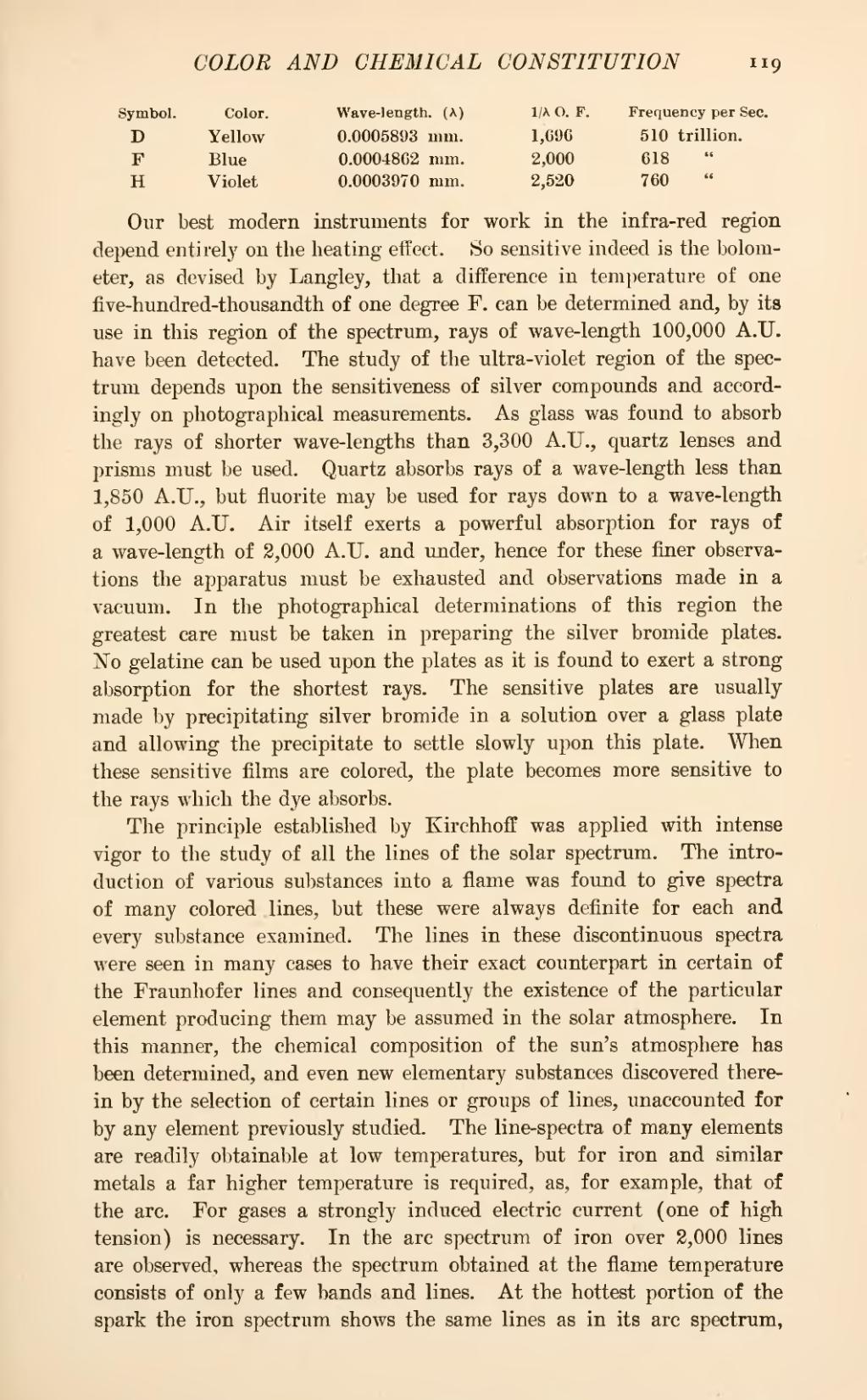| Symbol. | Color. | Wave-length. (λ) | 1/λ O. F. | Frequency per Sec. |
| D | Yellow | 0.0005893 mm. | 1,696 | 510 trillion. |
| F | Blue | 0.0004862 mm. | 2,000 | 618" |
| H | Violet | 0.0003970 mm. | 2,520 | 760" |
Our best modern instruments for work in the infra-red region depend entirely on the heating effect. So sensitive indeed is the bolometer, as devised by Langley, that a difference in temperature of one five-hundred-thousandth of one degree F. can be determined and, by its use in this region of the spectrum, rays of wave-length 100,000 A.U. have been detected. The study of the ultra-violet region of the spectrum depends upon the sensitiveness of silver compounds and accordingly on photographical measurements. As glass was found to absorb the rays of shorter wave-lengths than 3,300 A.U., quartz lenses and prisms must be used. Quartz absorbs rays of a wave-length less than 1,850 A.U., but fluorite may be used for rays down to a wave-length of 1,000 A.U. Air itself exerts a powerful absorption for rays of a wave-length of 2,000 A.U. and under, hence for these finer observations the apparatus must be exhausted and observations made in a vacuum. In the photographical determinations of this region the greatest care must be taken in preparing the silver bromide plates. No gelatine can be used upon the plates as it is found to exert a strong absorption for the shortest rays. The sensitive plates are usually made by precipitating silver bromide in a solution over a glass plate and allowing the precipitate to settle slowly upon this plate. When these sensitive films are colored, the plate becomes more sensitive to the rays which the dye absorbs.
The principle established by Kirchhoff was applied with intense vigor to the study of all the lines of the solar spectrum. The introduction of various substances into a flame was found to give spectra of many colored lines, but these were always definite for each and every substance examined. The lines in these discontinuous spectra were seen in many cases to have their exact counterpart in certain of the Fraunhofer lines and consequently the existence of the particular element producing them may be assumed in the solar atmosphere. In this manner, the chemical composition of the sun's atmosphere has been determined, and even new elementary substances discovered therein by the selection of certain lines or groups of lines, unaccounted for by any element previously studied. The line-spectra of many elements are readily obtainable at low temperatures, but for iron and similar metals a far higher temperature is required, as, for example, that of the arc. For gases a strongly induced electric current (one of high tension) is necessary. In the arc spectrum of iron over 2,000 lines are observed, whereas the spectrum obtained at the flame temperature consists of only a few bands and lines. At the hottest portion of the spark the iron spectrum shows the same lines as in its arc spectrum,
